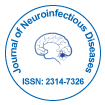Effect of Falciparum Malaria in Liver and Plasmodium Falciparum Effect in Human Body
Received: 09-Sep-2021 / Accepted Date: 23-Sep-2021 / Published Date: 30-Sep-2021
Introduction
Jungle fever could be a worldwide irresistible illness that remains a leading cause of horribleness and mortality within the creating world. Extreme and deadly jungle fever is transcendently caused by Plasmodium falciparum. Its administration and forecast depend on the mindfulness of a conceivable conclusion in travelers returning from endemic regions, early acknowledgment, and opportune successful treatment. Plasmodium falciparum is a unicellular protozoan parasite of humans, and the deadliest species of Plasmodium that causes malaria in humans [1]. This action audits the assessment and administration of patients with falciparum intestinal sickness and clarifies the part of the interprofessional group in assessing and treating patients with this condition. Recognize the pathophysiology of P. falciparum infection. Summarize the discoveries seen in a persistent with P. falciparum malaria. Describe common complications for patients with extreme P. falciparum malaria. Outline the significance of communication and collaboration among the intrigue group to upgrade the conveyance of care and move forward results for patients influenced by P. falciparum intestinal sickness. Plasmodium falciparum is the foremost dangerous of the human intestinal sickness parasites. It was the Romans who named the disease malaria for bad, and aria for air, as they believed that the disease was spread by contaminated air, or miasma [2]. The specific harmfulness of this species infers from its capacity to demolish the physiology of its have amid the blood stages of its development. The parasite develops and isolates inside erythrocytes, bolstering on the hemoglobin, and remodeling its have cells so they follow to blood vessel dividers. The approach of atomic transfection innovation, coupled with optical microscopy of fluorescent protein columnists, has incredibly progressed our understanding of the ways in which the jungle fever parasite modifies its have cell.
Sporozoites discharged from the salivary organs of the mosquito enter the circulation system amid bolstering, rapidly attacking liver cells. Sporozoites are cleared from the circulation inside 30 minutes. Malignant tertian malaria was caused by Laverania malariae (now P. falciparum), benign tertian malaria by Haemamoeba vivax (now P. vivax), and quartan malaria by Haemamoeba malariae [3]. Amid the following 14 days within the case of P. falciparum, the liver-stage parasites separate and experience agamic increase, coming about in tens of thousands of merozoites that burst from the hepatocyte. The length of this erythrocytic organize of the parasite lifecycle depends on the parasite species: unpredictable cycle for P. falciparum, 48 hours for P. vivax and P. ovale, and 72 hours for P. malariae. The clinical signs of intestinal sickness, fever, and chills are related with the synchronous crack of the contaminated erythrocytes. The species name was introduced by an American physician William Henry Welch in It is derived from the Latin falx, meaning "sickle" and parum meaning "like or equal to another"[4]. The discharged merozoites go on to attack extra erythrocytes. Not all of the merozoites partition into schizonts; a few separate into sexual shapes, male and female gametocytes. These gametocytes are taken up by a female Anopheles mosquito amid a blood dinner. Plasmodium falciparum causes serious jungle fever through a particular property not shared by any other human jungle fever, that of sequestration. Inside the 48-hour agamic blood arrange cycle, the develop shapes alter the surface properties of tainted ruddy blood cells, causing them to stay to blood vessels (a handle called cytoadherence). This leads to hindrance of the microcirculation and comes about in brokenness of numerous organs, ordinarily the brain in cerebral jungle fever. Although P. falciparum is easily recognized by human immune system while in the bloodstream, it evades immunity by producing over 2,000 cell membrane antigens. The initial infective stage sporozoites produce circumsporozoite protein (CSP), which binds to hepatocytes [5].
References
- Coatney GR, Collins WE, Warren M, Contacos PG (1971) 22 Plasmodium falciparum (Welch, 1897). The primate malarias. Division of Parasitic Disease CDC P. 263.
- Lalchhandama, K (2014) The making of modern malariology: from miasma to mosquito- malaria theory (PDF). Science Vision 14 (1): 3–17.
- Francis EG (2010) History of the discovery of the malaria parasites and their vectors. Parasites Vectors 3 (1): 5.
- Bruce-Chwatt LJ (1987) Falciparum nomenclature. Parasitology Today 3 (8): 252.
- Carla C, Ute F, Photini S, Bela T, Pedro C, et al. (1992) The basolateral domain of the hepatocyte plasma membrane bears receptors for the circumsporozoite protein of Plasmodium falciparumsporozoites. Cell 70 (6): 1021–1033.
Citation: Williams J (2021) Effect of Falciparum Malaria in Liver and Plasmodium Falciparum Effect in Human Body. J Neuroinfect Dis 12: 353.
Copyright: © 2021 Williams J. This is an open-access article distributed under the terms of the Creative Commons Attribution License, which permits unrestricted use, distribution, and reproduction in any medium, provided the original author and source are credited.
Select your language of interest to view the total content in your interested language
Share This Article
Recommended Journals
Open Access Journals
Article Usage
- Total views: 2374
- [From(publication date): 0-2021 - Oct 19, 2025]
- Breakdown by view type
- HTML page views: 1731
- PDF downloads: 643
